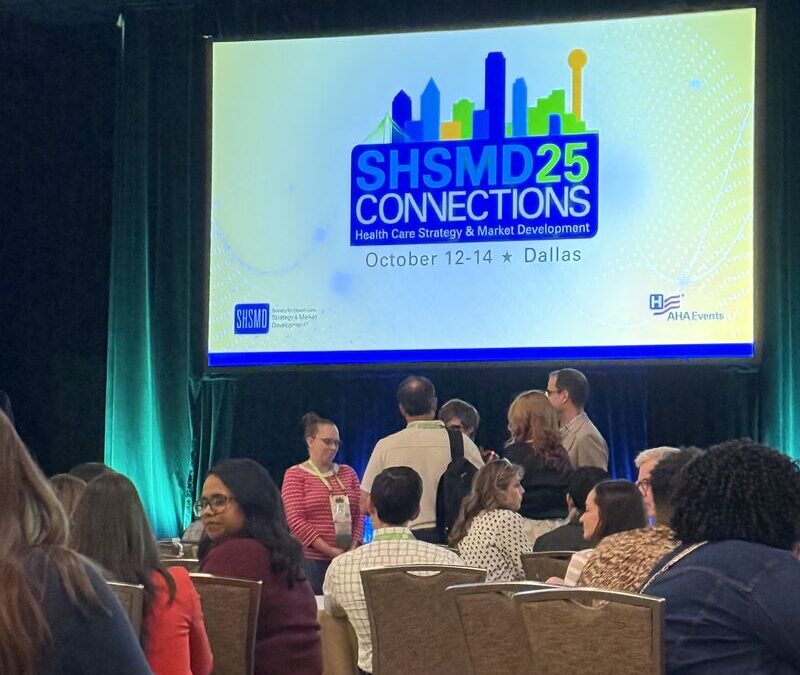When a parent logs into Netflix, it anticipates what they want. When they open Amazon, it recommends what they need. But when that same parent tries to navigate a healthcare system for their child, personalization disappears. Instead of feeling known, they feel processed.
This is the personalization gap. And it’s costing healthcare organizations volume, trust, and loyalty they cannot afford to lose.
According to McKinsey, 71% of consumers expect personalized interactions, and 76% get frustrated when it doesn’t happen. Yet in healthcare, only 14% of consumers say their experiences feel tailored to them (NRC Health, 2024). Meanwhile, companies that excel at personalization generate 40% more revenue than those that don’t (McKinsey, 2023).
Healthcare doesn’t have a personalization messaging problem. It has a personalization operating problem.
The Real Issue: Fragmentation, Not Imagination
Most health systems and plans believe they’re personalizing. They invest in CRM, segmentation, automation, and content. But without operational unity, personalization collapses.
The Advisory Board found that 60% of healthcare leaders cite cross-functional fragmentation as the number-one barrier to personalization—more than budget, tech, or talent. Teams are siloed. Journeys are inconsistent. Data isn’t shared. Campaigns don’t connect.
You can’t personalize what you haven’t operationalized.
Enter the GiG Model: Personalization as a System, Not a Campaign
ab+a’s GiG Model—Grow, Impact, Good—is the operating system that makes purpose-driven personalization possible, measurable, and scalable. It connects brand, demand, channel execution, and analytics so personalization becomes a discipline, not a deliverable.
- Grow – Precision demand generation and measurable ROI
- Impact – Human-centered storytelling and experience alignment
- Good – Trust, purpose, and belonging that build long-term loyalty
With GiG, personalization stops being a tactic and becomes a system of operational empathetic truth—one that activates personalization across every touchpoint, not just in ad copy or email subject lines.
The Campaign Personalization Grid — Where Personalization Becomes Real
The Campaign Personalization Grid is ab+a’s personalization activation tool—the mechanism that translates GiG strategy into precise, human-centered execution. It aligns five variables that must work together for personalization to land:
- Message – What we say
- Moment – When we say it
- Motivation – Why it matters
- Medium – Where it shows up
- Measurement – How we optimize and prove it worked
When these five elements lock into alignment, personalization becomes consistent, contextual, measurable, and emotionally resonant.
Quick Example: A Parent on a Care Journey (Grid in Action)
A parent in Glenview, IL fears something may be wrong with their child’s heart and begins searching for answers.
|
Grid Lever |
Example Personalization |
|---|---|
|
Message |
“When something feels off with your child’s heart, you shouldn’t have to wait for certainty.” |
|
Moment |
Within hours of them searching “pediatric cardiology near me” |
|
Motivation |
They want clarity, speed, and a trusted expert—not vague promises |
|
Medium |
Localized search ad + personalized landing page + retargeted social from the nearest Endeavor Health pediatric cardiologist |
|
Measurement |
Track CTA clicks, appointment requests, and follow-up engagement to refine sequence |
Next touchpoint: They receive a short video of a local family’s cardiology experience at Endeavor Health—educational, empathetic, and human, not clinical jargon.
That’s personalization that earns trust and moves someone forward. And that is how the Grid drives personalization across an entire journey—not a single impression.
Proof: Empathetic Personalization That Performs
UnitedHealthcare – South Florida Medicare Advantage
By personalizing to what seniors cared about most—choice and local trust—ab+a helped drive a 143% increase in leads, 220% jump in applications, and 77% increase in calls, all on a 40% smaller budget.
Las Mercedes Medical Centers
When personalization was applied to bilingual demand generation, results were dramatic: a 422% increase in qualified leads and a 93% decrease in cost per lead, driven by personalization across channels and moments.
With GiG and the Campaign Personalization Grid, personalization doesn’t just feel better—it performs better.
Why Personalization Also Fuels Good
Personalization is not just a growth lever—it is a trust lever. According to Edelman, 77% of consumers are more likely to stay loyal to brands that demonstrate shared values and purpose. In healthcare, that isn’t marketing fluff—it’s survival.
When personalization reflects brand purpose, patients don’t just choose you. They believe you.
That’s the Good in GiG—turning marketing into meaning, and meaning into loyalty.
The Economic Mandate
Gartner predicts that by 2026, 80% of consumer healthcare choices will be driven more by personalized experience than traditional brand strength. The math is simple:
- Systems that operationalize personalization will grow.
- Systems that don’t will commoditize.
Personalization is no longer a differentiator. It is the expectation.
The Mandate: If You Want Personalization Outcomes, You Need a Personalization System
Most organizations are trying to personalize from the middle—creating campaigns that are smarter but not connected. That approach cannot win.
To deliver personalization that is:
- Emotionally relevant
- Digitally precise
- Operationally scalable
- Financially accountable
—you need a system built for it.
That system is GiG. And the Campaign Personalization Grid is its execution engine.
Because in healthcare, personalization isn’t about knowing your audience.
It’s about proving you care enough to act like it.






